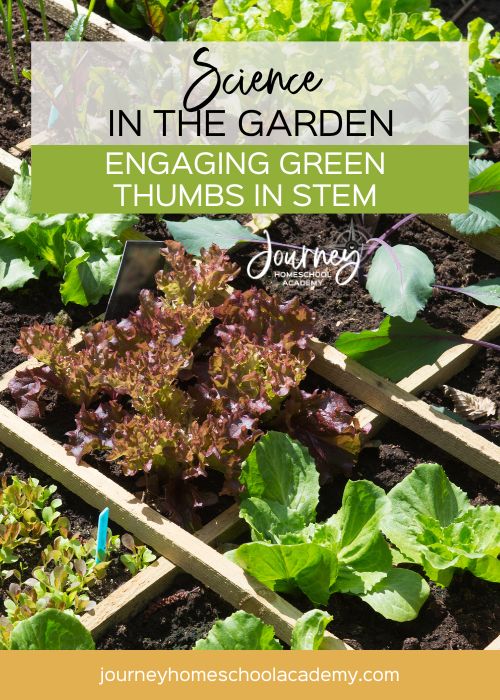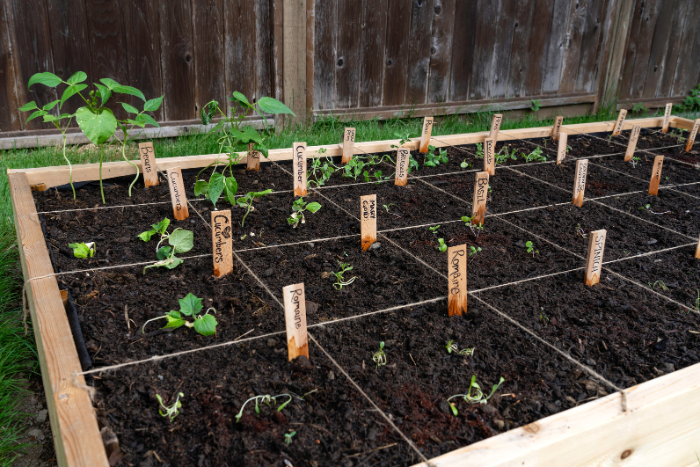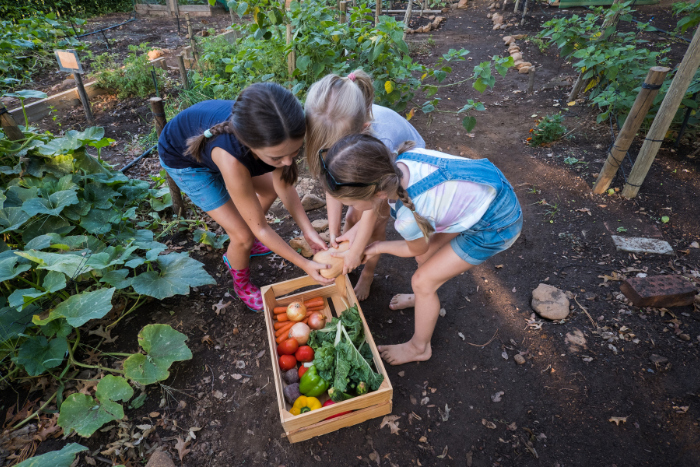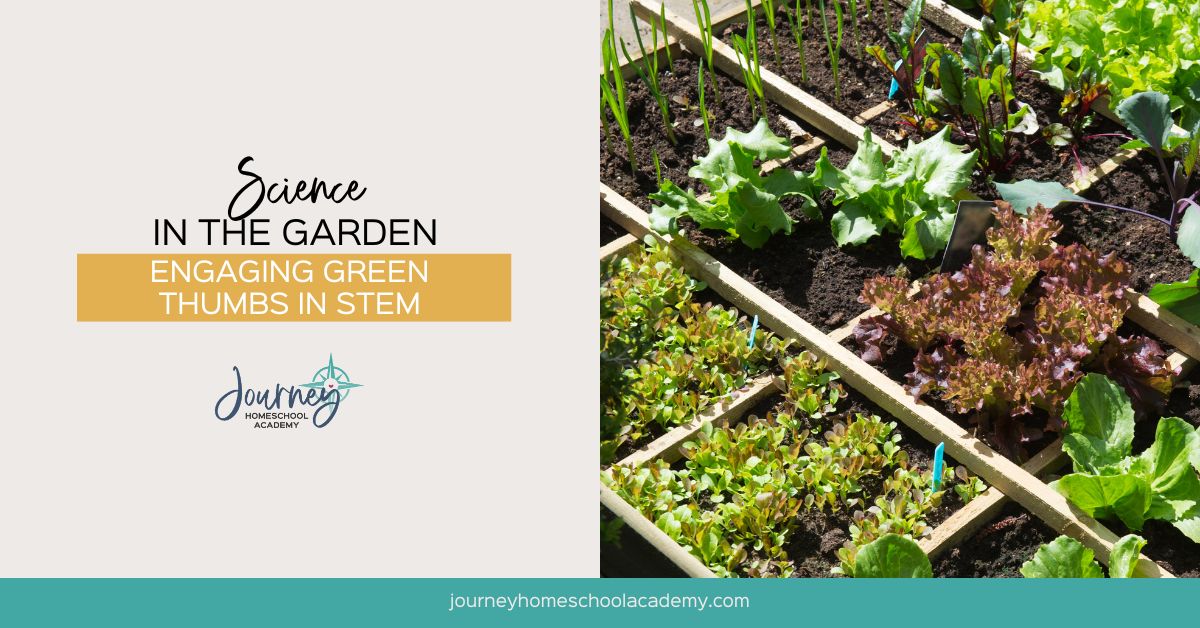Springtime brings sunny skies, pollen swirling in the air, and beautiful new green growth outside! It also brings the perfect opportunity for science in the garden! There is great excitement in planting a seed in the ground and watching it sprout and grow almost overnight. For your kids with “green thumbs,” the garden is a great place to integrate STEM learning while also enjoying the beauty of the outdoors!

Science in the Garden
Biology, earth science, nutrition … there are SO many opportunities to teach science in the garden. What is the life cycle of a plant? Why do different seeds take longer to sprout? How does weather impact a garden? How does compost improve the soil? What is the difference in nutritional content in each vegetable or fruit you plant? The list of learning topics goes on and on!
So many books and videos dive into these questions, but so much can be learned just from observation and experience! If you know a rainy day is coming, take pictures of your garden before and after the rain and compare. Start a compost and then apply it to part of the garden and observe the growth of plants with compost. Harvest what you’ve grown and encourage your students to create new recipes in the kitchen.
Technology in the Garden

In today’s day and age, there are endless tools that make gardening easier (because if you’ve ever gardened, you’ve realized that getting things to grow is actually harder than it looks). You can start with the basics: rake, hoe, shovel, rototiller, hose, etc. Discuss how each tool can be used to benefit the garden. Then, if you want to take it a step further, look into more advanced garden technology (some call it “smart gardening”), like automated watering systems, gardening apps, and soil monitors.
Although garden technology can get pricey, many tools do save you a lot of time and result in greater success. Discuss the pros and cons of various technologies with your students, and encourage them to research what tools might work best for your budget and needs.
Engineering in the Garden

Although it might sound easier to just toss some seeds in the ground and hope they grow, a successful gardener will put a lot of planning into their garden! First, they must consider where the best location is to plant. Will the space have full sun or partial shade? How many square feet are needed for each plant? What other factors will need to be considered for a successful growing season?
Each of these questions brings engineering into your gardening, and they’re a great way to involve students in the process. Plants like peas and cucumbers usually need a trellis to grow upwards, and this is a great opportunity to include your students in the design process. You can also try out a garden planning tool like this one, and let your kids play around with the strategic layout of your space.
Math in the Garden

There is an abundance of math concepts to be taught in the garden! For younger learners, this can be as simple as counting seeds and measuring rows. For older children, you can take it a step further by calculating how much each seed will yield and estimating the cost of each vegetable or fruit. Or, they can help you calculate how much fertilizer is needed to feed your plants (Note: When using fertilizer, always have an adult present!).
You could also offer an incentive by encouraging students to sell some of their harvest and then determining how much to charge in order to break even or make a profit! Further, you can use math concepts to try recipes with your harvested food.

Teaching Science in the Garden With Experience Biology
At Journey Homeschool Academy, we are huge advocates for applying science concepts in practical, everyday life ways. Experience Biology is our online homeschool biology curriculum for elementary and high school students! Through engaging video lessons, hands-on STEM activities, and actually engaging reading lists, your students will explore the world around us, including plants! Science is so much more than just reading a textbook and remembering a bunch of facts and terms, and Experience Biology aims to captivate both you and your student(s) with the wonders of life around us. (We also have an awesome Earth Science curriculum for elementary and middle school grade levels!)
Teaching STEM-based science in the garden is a super fun (and useful!) way to integrate learning concepts and life skills at the same time. So, head to your local greenhouse, grab some seeds, and start planting with your students by your side!
